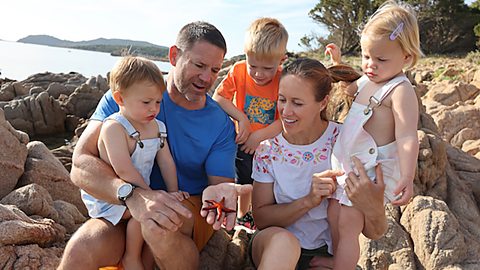As a star of Springwatch, and many other wildlife shows besides, Megan McCubbin knows a thing or two about animals in the UK.
For the Summer of Adventure, Megan has some top tips for parents, based on her own childhood, about embracing the natural world as a family and discovering all of the birds, mammals and minibeasts the British Isles have to offer.
Parents' Toolkit met her at one of her favourite childhood parks, Southampton Common, to learn more…
Megan: Hello, my name is Megan McCubbin and I'm a zoologist and wildlife TV presenter. But when I'm not doing that, I'm often searching for as much wildlife as I can find - trying to listen to it and see it in the best possible way. And you can find it anywhere, whether you're in the heart of the city or outside in the countryside and you never know what treasures you could come across.
Megan: I've come down to Southampton Common. It's one of the local parks where I grew up and learned to love nature. So today I've come to find some of my favourite wildlife as well as to share some of my top tips to help engage children with the outdoors. With the Parents' Toolkit Summer of Adventure.
Megan: There's always that moment when you're in the garden as a child and you're following a butterfly, or perhaps you found a woodlouse scuttling through the undergrowth. You can't help but ask yourself questions like, 'What's it doing?' 'Where is it going?' 'What's it eating?' That tiny bit of curiosity, which led a massive spark for me to wanting to protect nature and to love it even more and to be outside, to listen to the birds.
Megan: I mean, I can hear chiff chaff at the minute, a blackbird singing. It just brings a smile to my face. And that's something we really need to harness for our children, but also reconnect to, as well, as parents.
Megan: One of my biggest top tips when you're out and about is to just stop and sit down for a minute because you never know what you're going to see. Sometimes animals can be a little bit shy, so the best thing to do is to look for their presence. Now, first of all, if you look up, there could be some birds' nests above your head. Also, you want to look at old trees. There might be cracks and crevices in there where you'll see lots of different life coming in and out. As the tree decays over time and gets destroyed in storms, branches fall down to create deadwood habitat. If you lift over a log, you'll be sure to find lots of different cool insects.
Megan: Now, last year I was very lucky because I was walking in a woodland and it became the end of the bird breeding season and it was a windy day and it caused this nest to fall out of a tree quite literally at my feet. Now I think this is a goldcrest nest and I can tell that because it's made from mosses that have been intricately woven together, as well as the tiny feathers that are still there remaining from the young, that once fledged a couple of years ago. It's a brilliant educational tool to get people engaged with birds and how beautiful nests can be.
Megan: Down the road from my house growing up, there was the most beautiful bit of woodland and my parents were very much of the mentality of allowing me to go out and explore and figure out nature on my own. Climb a tree, you know, get dirty in the undergrowth, see what's living there. I found an old tree like this with a hole beneath it and I knew, because of scruff marks and some bare earth, that it was quite an active area. So if I were to sit 20, 25 metres away, then I might be in for something special. And I found fox cubs that came out to play. They were just running and learning what it took to be a fox and I, in return, got to learn all about their behaviour and how important their habitat is.
Megan: Now you know where to look out for animals. What kind of species could you expect to see with your family this summer? Well, first of all, I recommend using your ears and just stopping for a moment, because I can hear quite a lot. I can hear lots of tiny grasshoppers in these hedges and long grasses, but what's really capturing my attention is up at the top of this tree - it's another singing blackbird. Now they're quite obvious to pick out because they often make their way to the tallest of branches and they really pump their song out and they're quite obvious with their dark silhouette against the skyline.
Megan: But a couple of other bird calls you can listen out for are, for example, the chiff chaff, which is very iconic because it says well, two notes, really it goes: chiff, chaff, chiff, chaff, chiff, chaff, very repetitively. So if you hear that, you know there's a chiff chaff nearby. And then of course, the wren. Now the wren is a small brown bird with a tail that kind of sticks up weirdly from behind, but its song is amazing. It sounds a little bit like a machine gun. I won't do an impression of it, but you can look at the Parents' Toolkit to figure out exactly what that sounds like, so you can pinpoint it out on your next walk.
Megan: One of my other favourite areas to get up close with wildlife is to come to your local pond, lake or reservoir and whenever I was young I used to come and feed the ducks bread. But what we now know is that bread unfortunately isn't very good for them. So I've got some frozen peas with me here and I'm simply chucking them in the water and these ducklings are having a great time learning how to dive to get those peas for themselves. Around the water's edges we see lots of really interesting plants, which means there's gonna be some interesting insects. And my favourite thing are dragonflies and damselflies. To look out for those, you need to see fast moving, often flashes of colour because they're very bright and they'll be going across the water surface, mating and reproducing the next generation for the following year. Oh water is just great and mallards are underrated and very very beautiful. Come on, have some more peas!
Megan: So get outside with your family this summer because there are so many amazing species, plants and habitats for you to discover. And with all the activities and tools available on the Parents' Toolkit, you can really kick start your Summer of Adventure.
Megan found her goldcrest nest after it had fallen out of a tree, after the chicks had already left. Please don't try to approach active nests, whether they're in a tree or on the ground.
And if you do lift over a log while looking for minibeasts, make sure to put it back as you found it, so the bugs and creatures can return to their home.
Megan's tips for spotting wildlife with your family
Stay curious - Children are naturally curious about the world around them. When they see a woodlouse or a butterfly, they might ask, 'What's it doing?', or 'Where is it going?' You don't need to have all of the answers, but if you stay open to questions, you're encouraging your child to discover more about the world around them.
Stop and sit - Sometimes animals can be a bit shy, so patience is key. In the film, Megan remembers walking in the woods near her home as a child, when she spotted some 'scuff marks' by a hole below a dead tree. She set up camp a little way away, hiding in the undergrowth and, eventually, after a long wait, fox cubs emerged from the hole to play. A special moment that Megan might have missed if she had kept walking that day!
Learn to use your ears, as well as your eyes - In a forest full of summer vegetation, you'll be able to hear much more wildlife than you can see - at first, anyway. If you and your child can tune into a couple of easy birdsongs - maybe a blackbird or a wren - then your walk in the woods will already be that much richer. But what else can you hear? Perhaps the clicking of grasshoppers in a grassy field, or a squirrel barking from the tree tops…
How did Megan get into zoology and wildlife presenting?
"I first got into wildlife when I started recognising things moving around, so probably age two when I could follow a butterfly around the garden or have a look under a log for a centipede.
"I've always been a fan of the underdog when it comes to wildlife. I think the fluffy mammals are great, I'm a big fan of them. I've had rabbits and guinea pigs and poodles, but I also really appreciate the insects and minibeasts.
"It is about that web of life that you get to know more about as you grow your interest in natural history - you understand that these mammals can't be here without insects and the insects can't be here without the plants.
"So this beautiful web of life grows more and more complicated by the day and more and more beautiful. And that's what keeps me engaged and interested."
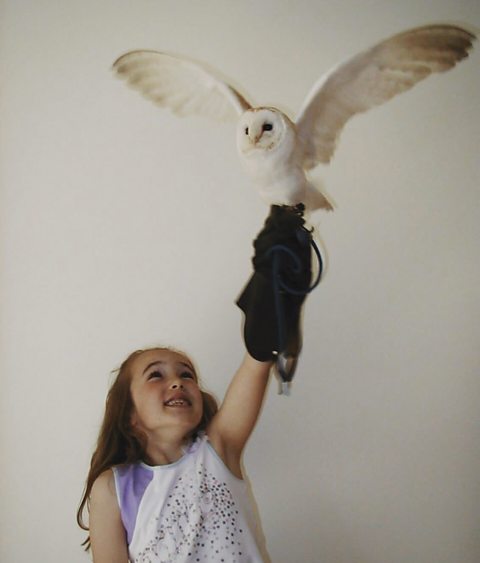
"At university I ended up studying zoology, but my path to where I am now was a little more complicated than that."
"I'm dyslexic and I actually struggled at school, especially with science and maths, and I had to figure out how I learned best within that school curriculum.
"I wasn't good at exams, I really needed to get practical experience.
"And that's the biggest bit of advice to give to any young budding zoologist or somebody that would like a career in wildlife television - get as much practical experience as you can.
"There are amazing wildlife charities all over the UK that you can go and volunteer with. I was helping out my local wildlife hospital from the age of 12.
"Don't be afraid to get out there. Lend a helping hand to wildlife and then you can figure out which career is best suited for you."
What's your favourite bird to see in the UK?
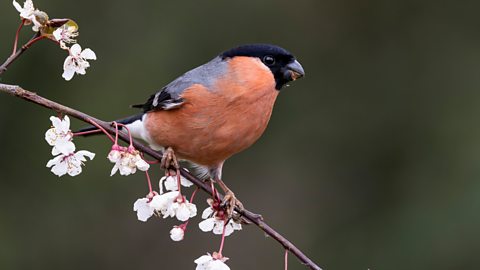
"One of my favourite birds to see around the UK is without a doubt the bullfinch. It's quite a chunky finch, with a big head and quite a large breast, but the males are the most beautiful things.
"They've got this gorgeous rosy-red breast and this iconic, very contrasting black head. They're really a delight to see.
"And if you see the male, chances are you're often going to see him with his partner, the slightly less colourful female. They're found in about one in ten gardens around the UK, so, if you have them in your garden, you're very lucky and I hope you're appreciating your bullfinches!"

More from BBC Bitesize Parents' Toolkit…
Parents' Toolkit
Fun activities, real-life stories, wellbeing support and loads of helpful advice - we're here for you and your child.

Personality quiz: Which minibeast are you?
"Am I a worm or a woodlouse?" If you've ever asked yourself this question, this is the quiz for you.
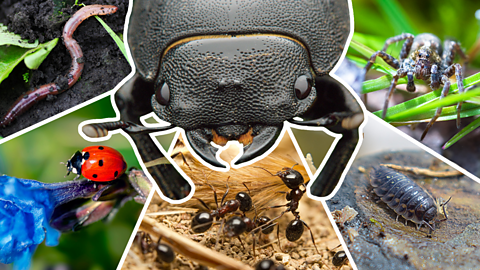
Quiz: Learn to spot UK birds using their songs
Help your child learn how to identify British garden and woodland birds from their songs and appearance.
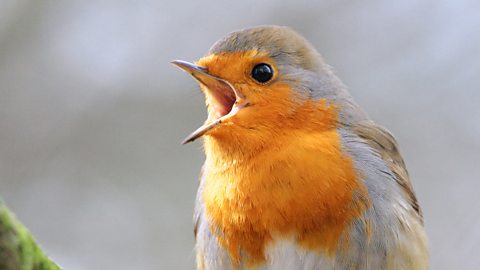
Quiz: Can you identify a tree by its leaves?
Do you know your oak from your yew? Turn over a new leaf and learn about trees!
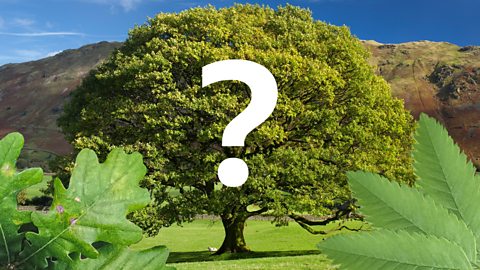
How to spot bats in the UK
Where to find them, how to spot them and some bat facts to wow the kids!
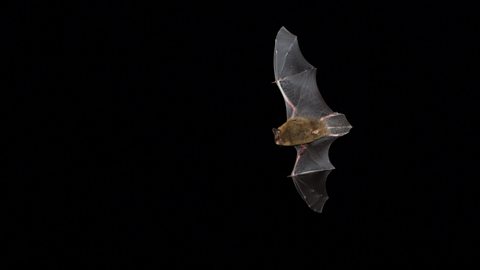
Why playing out and exploring is good for our kids
Steve Backshall, Helen Glover and child psychology expert Helen Dodd have some advice for parents.
